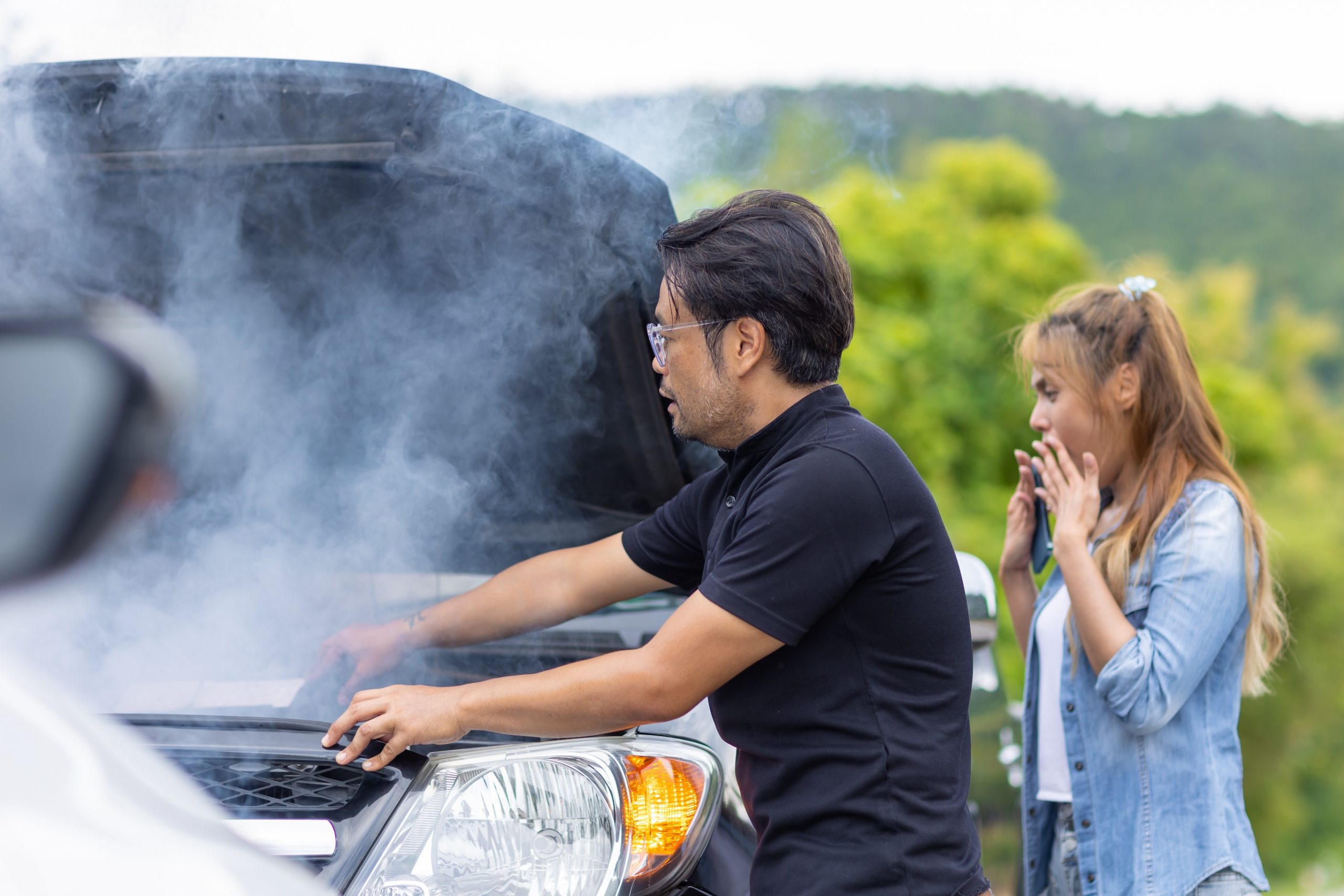

Your vehicle’s cooling system plays a crucial role in keeping the engine at a safe operating temperature. When the cooling system warning light illuminates on your dashboard, it’s signaling a potentially serious issue—one that requires immediate attention. Ignoring this warning can lead to catastrophic engine damage. In this month’s blog post, we examine why stopping your vehicle is essential and what you need to know about cooling system maintenance.
Why You MUST Stop Driving
The cooling system keeps the engine from overheating by circulating coolant (antifreeze) through the engine and radiator. If the cooling system warning light turns on, it likely means your engine is overheating. Driving further can cause:
- Engine damage – Excess heat can warp metal parts, ruin gaskets, and cause a complete engine failure.
- Cracked or blown head gasket – An overheated engine can warp the cylinder head, leading to a costly repair.
- Coolant leaks – If coolant is escaping, the system will fail to regulate temperature.
- Permanent engine failure – If left unchecked, an overheated engine can seize up entirely, requiring an expensive replacement.
If this warning light appears, pull over immediately in a safe location, turn off the engine, and allow it to cool before inspecting the issue.
What Could Be Wrong?
The cooling system warning light can indicate several issues, including:
- Low coolant levels – Check for leaks or an improperly sealed coolant reservoir.
- Failing thermostat – A stuck thermostat will not allow coolant to circulate properly.
- Radiator problems – Blocked or damaged radiators reduce cooling efficiency.
- Water pump failure – This component is responsible for pumping coolant through the engine.
- Broken hoses or leaks – Coolant escaping through cracks or worn connections reduces cooling effectiveness.
How to Maintain Your Cooling System
To prevent issues, routine maintenance is key:
- Check coolant levels regularly – Top off coolant if necessary and ensure it’s at the correct mixture.
- Inspect for leaks – Look under your vehicle for puddles of coolant.
- Flush the cooling system – Replace coolant as recommended by your manufacturer (typically every 30,000–50,000 miles).
- Monitor the thermostat – If your engine runs too hot or too cold, it may be time for a replacement.
- Inspect hoses and radiator – Cracks or loose connections can lead to leaks or inefficiencies.
Your vehicle’s cooling system is vital to its longevity and performance. If the cooling system warning light turns on, don’t wait—pull over, assess the situation, and seek professional help if needed. Preventive maintenance goes a long way in ensuring a reliable and efficient cooling system, keeping your engine safe from overheating. If you want to have your cooling system checked, contact the service professionals at Colonial Service Station to schedule an appointment.
